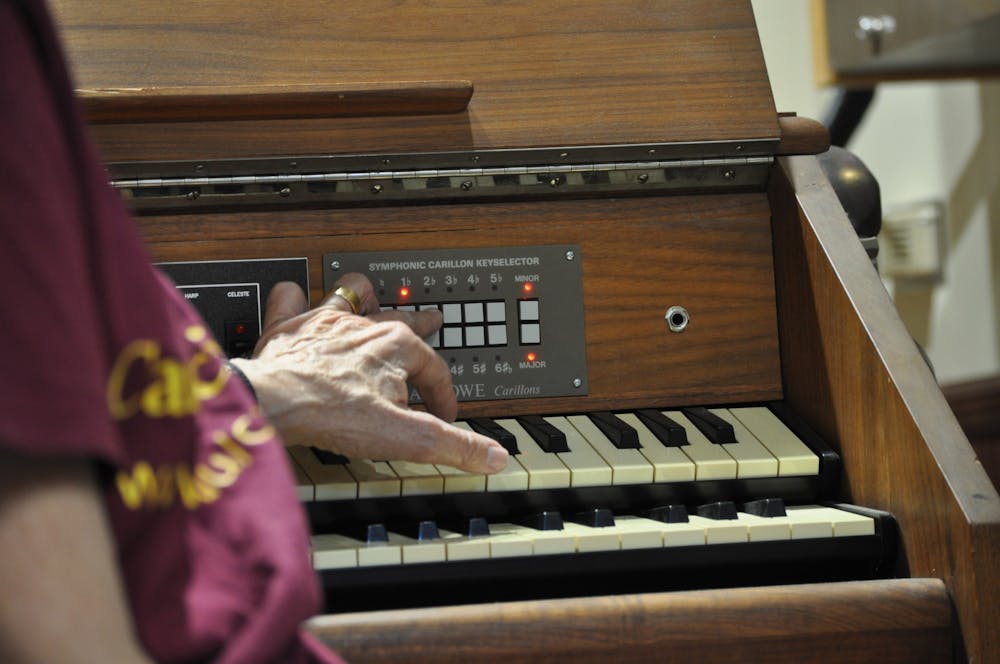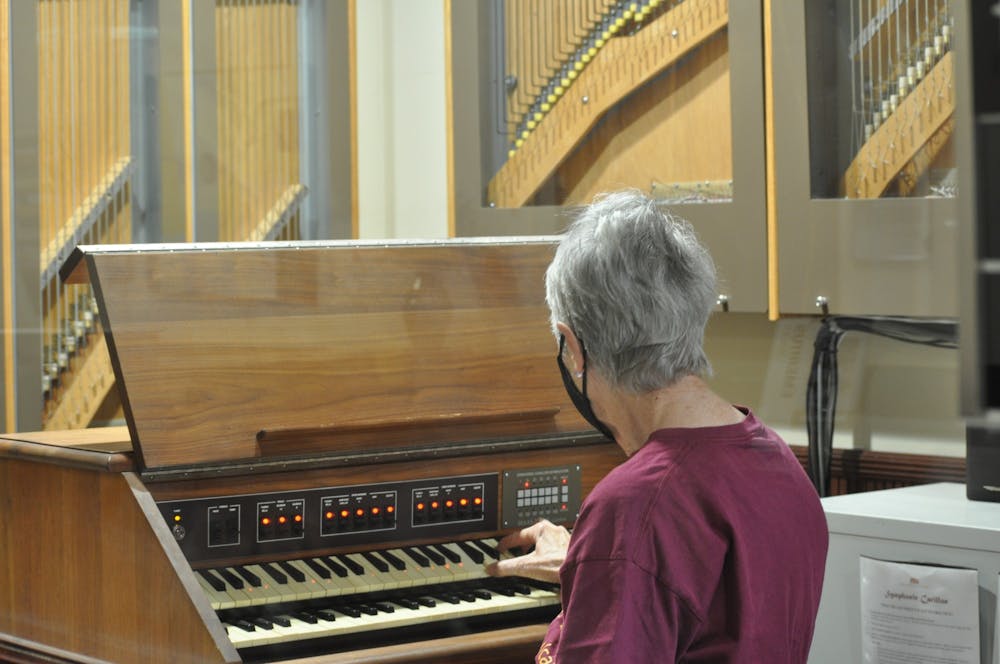The familiar sounds of the ASU symphonic carillon, the tones that ring hourly at the Tempe campus, bring a sense of constancy to students after nearly a year of uncertainty.
The carillon, a keyboard instrument with 258 tubular bells, has had a long and storied history on the campus. After overcoming a multitude of challenges from being lost in storage to surviving a fire, the instrument is continuing to operate — even in the midst of the COVID-19 pandemic.
The instrument, purchased by the Associated Students of ASU in 1966 as a tribute to ASU students, faculty and alumni who died in military service, is connected by wires to bells on the surrounding walls. When it is played, the sound can be sent to speakers in various locations across the Tempe campus.
William Swayze, an instructional specialist senior with the School of Music, Dance and Theatre and one of three University carillonneurs who play and put on concerts with the carillon, said he believes the instrument’s routine playings keep it relevant through the pandemic.
“Even if we're all not on campus, and only some of us are, it has endured through the pandemic because it is a clock and it regularly plays,” Swayze said.
Although he said not all students appreciate the rich tones, he thinks most students are grateful for the familiar sounds.
Carl Cross, co-chair of the ASU Carillon Society, was a student at the University when the carillon was first purchased. He said he recalls hearing its music early on until it was put in storage for 35 years.
In 2002, Judith Smith, also a co-chair of the ASU Carillon Society, found the instrument in the Matthews Center after reading about it in archival records. She and Cross then set out to raise funds to refurbish the instrument.
Smith remembers the challenge of raising thousands of dollars necessary to restore the carillon. After spending hours fundraising on Forest Mall, Smith felt hopeless as she watched the funds slowly trickle in, she said.
“I never gave up, we never gave up,” Smith said, and the two eventually raised enough money to send it back to its manufacturer, Maas-Rowe, for restoration.
Upon its return, the carillon found a home in the Zuni Room in the Memorial Union in 2005 until a fire struck the building in 2007.
Cross was in his Hayden Library office as he watched the flames sweep through the MU. When the blaze was extinguished, he and Smith rushed to see if the instrument survived. Because of a firewall that came down, the instrument was miraculously untouched from the burning flames.
“I thought, yeah, it's supposed to stay on campus after it's been through 30 years of storage. It could have been broken, lost or whatever, and here it still is after a consuming fire,” Cross said.
The instrument has since been moved to the basement of Old Main.
“The home in Old Main, I think, is so appropriate because that's the oldest building on campus. There's a lot of tradition in there,” Cross said.
Over the years, the carillon has been played at weddings, military commissions, Christmas sing-alongs and other ceremonies.
Although live concerts have been suspended due to the COVID-19 pandemic, the instrument still marks its presence on campus through its hourly chimes and 5 p.m. preprogrammed concert. Smith, however, is worried about the future care of the carillon.
“My prayer and my plea is that someone steps forward to the next step of this wonderful instrument,” Smith said.
Because the carillon was purchased for the University as a whole, no one group is in charge of its care. Smith and Cross have both retired, so the instrument is in need of a new advocate on campus.
Smith hopes a group of students will step up to ensure the instrument remains an integral part of ASU history for years to come. But in the meantime, the carillon will continue to broadcast its rich tones across the Tempe campus, just as it has done for many years.
“We hope it becomes and continues to be an institution, one of the features of ASU that people remember fondly,” Swayze said.
Reach the reporter at alcamp12@asu.edu and and follow @Anna_Lee_Camp on Twitter.
Like The State Press on Facebook and follow @statepress on Twitter.
Continue supporting student journalism and donate to The State Press today.





